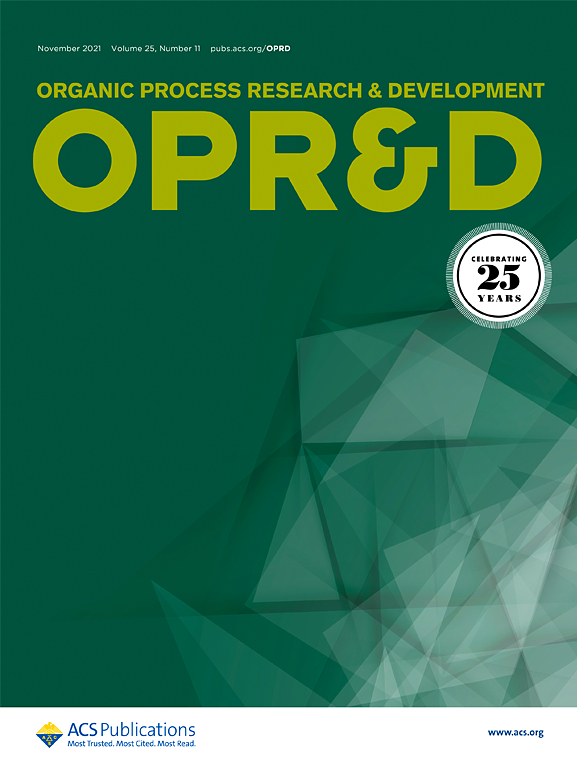Development of a Manufacturing Process for S-892216 Part II: Improvements Toward Commercially Feasible Process
IF 3.1
3区 化学
Q2 CHEMISTRY, APPLIED
引用次数: 0
Abstract
In this study, we described developing a refined manufacturing process for S-892216, a second-generation COVID-19 therapeutic agent currently under development. The focus of this research was on the feasibility of commercial manufacturing. In particular, we developed a manufacturing process that facilitates the stable acquisition of a specific crystal form for intermediate or maximum reaction efficiency using flow chemistry, eliminating the need for excessive extraction, concentration, and purification operations. Compared to the first-generation process used during early phase clinical trials, the overall yields (increasing from 41% to 62%) and PMI values (decreasing from 323 to 210) improved significantly. These advancements underscore the potential of the second-generation process for S-892216 to strengthen the supply chain of COVID-19 therapeutics.

S-892216制造工艺的开发,第二部分:对商业可行工艺的改进
在本研究中,我们描述了目前正在开发的第二代COVID-19治疗剂S-892216的精炼制造工艺。这项研究的重点是商业生产的可行性。特别是,我们开发了一种制造工艺,可以使用流动化学技术稳定地获得特定的晶体形式,以达到中间或最大的反应效率,从而消除了过度提取、浓缩和纯化操作的需要。与早期临床试验中使用的第一代工艺相比,总体收率(从41%增加到62%)和PMI值(从323降低到210)显著提高。这些进展凸显了S-892216第二代工艺在加强COVID-19治疗药物供应链方面的潜力。
本文章由计算机程序翻译,如有差异,请以英文原文为准。
求助全文
约1分钟内获得全文
求助全文
来源期刊
CiteScore
6.90
自引率
14.70%
发文量
251
审稿时长
2 months
期刊介绍:
The journal Organic Process Research & Development serves as a communication tool between industrial chemists and chemists working in universities and research institutes. As such, it reports original work from the broad field of industrial process chemistry but also presents academic results that are relevant, or potentially relevant, to industrial applications. Process chemistry is the science that enables the safe, environmentally benign and ultimately economical manufacturing of organic compounds that are required in larger amounts to help address the needs of society. Consequently, the Journal encompasses every aspect of organic chemistry, including all aspects of catalysis, synthetic methodology development and synthetic strategy exploration, but also includes aspects from analytical and solid-state chemistry and chemical engineering, such as work-up tools,process safety, or flow-chemistry. The goal of development and optimization of chemical reactions and processes is their transfer to a larger scale; original work describing such studies and the actual implementation on scale is highly relevant to the journal. However, studies on new developments from either industry, research institutes or academia that have not yet been demonstrated on scale, but where an industrial utility can be expected and where the study has addressed important prerequisites for a scale-up and has given confidence into the reliability and practicality of the chemistry, also serve the mission of OPR&D as a communication tool between the different contributors to the field.

 求助内容:
求助内容: 应助结果提醒方式:
应助结果提醒方式:


